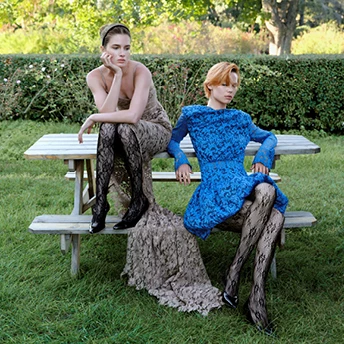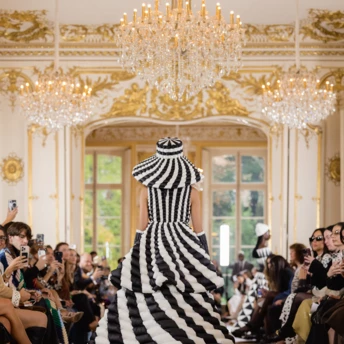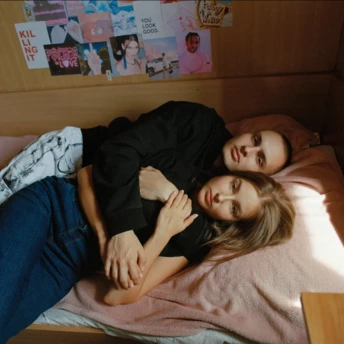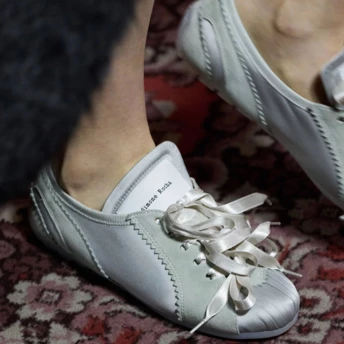In the bag: Stas and Vlad Shmelevsky – about the evacuation from Melitopol, the war, and the future
Stas and Vlad Shmelevsky are the founders of the Ukrainian hat brand Shmelevsky Hats. The brothers come from Melitopol, where one of them was caught in a full-scale invasion. They told us about their February 24, evacuation from the occupied city and resumption of business from scratch.
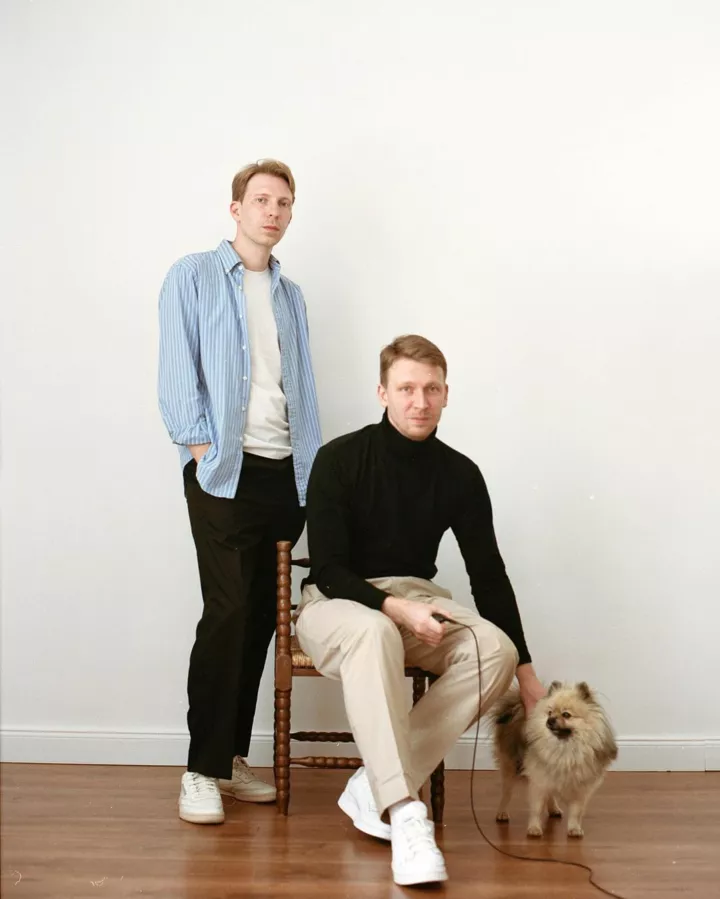 Stas and Vlad Shmelevsky
Stas and Vlad ShmelevskyOn the night of February 24, I woke up to a roar, of the bombing of the Melitopol airport. I immediately realized that the war had begun. The basic things had already been collected, because a few months before the invasion, the feeling that everything would happen did not disappear. However, I still hoped for the best.
I wrote to my brother, he was in Kyiv and, like many Kyivans, spent the first days in the subway, hiding from the bombs. Then my mother called, I took the dog, and a backpack with the collected things and went to her. On the way out of the entrance, I saw the residents of the next building leaving en masse. At such moments, nothing to worry about, except the safety of loved ones. Within hours, it became known that the city was occupied.
The main feeling in the occupation is devastation, anxiety, and the feeling that you want to somehow resist the situation. That's why people went to the protests, which were quite massive and in many respects desperate.
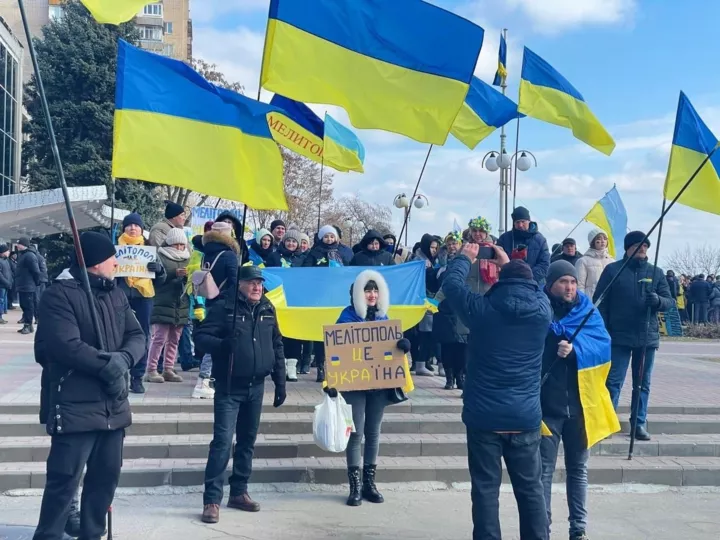 Rallies in Melitopol
Rallies in MelitopolAt the first rally, some literally lay down under military equipment, obstructing its movement; pushed by armored personnel carriers and cars of occupiers. In the second, the soldiers started firing in front of the protesters, first in the air, and then fired several shots at people. One of them hit the leg of a man who was standing four meters away from me. Despite the shooting, we continued to stand and sing the Ukrainian national anthem. This was incredible. Later, Russian riot police were brought in and brutally dispersed people. As a result, many people stopped going out for fear of their own lives.
"Life" in the occupation is difficult to call life. It is impossible to feel safe when the enemy's military equipment travels through the central streets of the city and enemy soldiers with machine guns walk. Shots and explosions were also heard periodically.
At that time, my leisure time was limited to short meetings with friends to walk the dog and learn about the news – the Internet, mobile communications, and even the radio were periodically jammed. The latest events were reported on Gypsy Radio. Electricity and water were also turned off. In some areas, it did not appear at the time of my departure.
There are no laws on the occupation. They can break into your house at any moment and do anything, stop on the street and take you wherever they want. There is nothing that you can do about it. This caused either total aggression or the desire to shut up at home and not breathe. There were cases when people who went to the rally were found and came with "preventive talks", beaten, and said something like "where have you been for 8 years?".
It is impossible to feel safe when the enemy's military equipment travels through the central streets of the city and enemy soldiers with submachine guns go.
Kidnapping and looting have become the norm. For example, the driver with whom we were leaving Melitopol was held captive by the Chechens for ten days. Of course, there are those who close their eyes and try not to notice what is happening. They usually say "the main thing is not to bomb." However, most are still aware of the risks but do not want to leave home. Some just don't have the money to go and live somewhere else.
Life under occupation is existence. When we had the opportunity to leave, we took advantage of it. You really understand what occupation is only when you leave. After leaving, I realized for a long time that it was possible not to whisper and not to look in all directions. Almost all acquaintances and friends who were lucky enough to leave felt about the same.
Volunteers, who were carrying medicines and other humanitarian aid, also took care of transportation: they formed convoys of cars that could take people to Zaporizhia. They knew the best way to get around the fighting, where the checkpoints were being set up, and where the problems might be.
 Fields near Melitopol, through which many are trying to escape
Fields near Melitopol, through which many are trying to escapeWe were warned that there were no guarantees. If the occupiers do not like something, they can shoot the car, take away things or not let the car out at one of the checkpoints. There have been such cases. Some stood at checkpoints for up to five days. We took our dog, a few bags of clothes, and laptops. At our own risk, we set off.
In peacetime, the road from Melitopol to Zaporizhzhia lasts an hour and a half. We rode seven. We passed ten checkpoints. Everyone is searched, they look at their phone, and they look for tattoos with Ukrainian symbols.
Burnt tanks along the roads, shot, cars, mines on the roadsides – the usual landscape of the route "Melitopol – Zaporizhzhia" today.
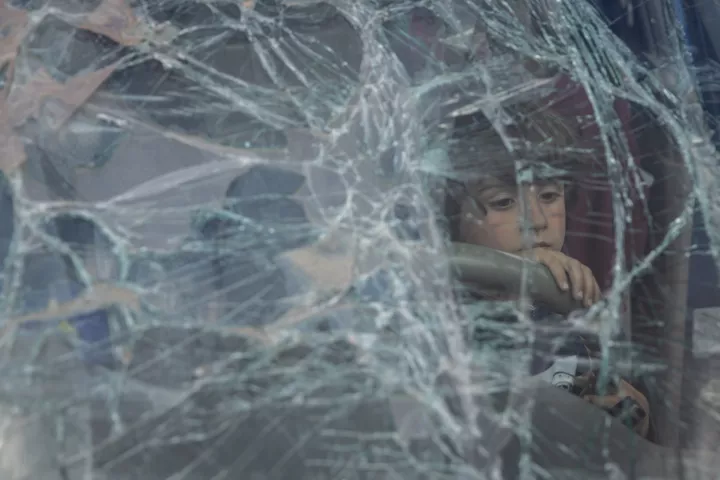 People can stand at checkpoints for several days, waiting their turn to pass
People can stand at checkpoints for several days, waiting their turn to passAt one of the checkpoints, a drunken LNR member pointed a gun at my dog when he started barking, with the words "what if I ("bark")?" It was hard to tell from his glassy gaze whether he was joking or not. We were lucky, we passed all the checkpoints and got to Zaporizhzhia. From there to relatives in Lutsk, and then to Kyiv.
Before the war, we finished work on a new collection of felt and straw hats, which we planned to release in the spring. I was able to take only sketches with me, the new models remained in Melitopol.
From the first day of the war, delivery services in the city did not work, so we canceled several pre-war orders and returned the money to customers. Only after I managed to leave did we start thinking about resuming work.
The process of resuming production lasted about two months. During this time, we made tools, and pads and purchased the necessary materials to create hats. In fact, we renewed everything from scratch. It was very nice that despite the war, some customers asked if we worked and wanted to order a hat. In such moments you realize that everything is not in vain.
 Stas Shmelevsky
Stas ShmelevskyToday we are in Kyiv. We started taking orders a week ago. The first was a straw fedora from the summer collection. We are happy that people need hats again, and despite the war, they remember and support the brand. We are grateful to all who wrote and supported, as well as to the heroes of the Armed Forces. Thanks to them we can continue to do our favorite thing.
In times of war, it is difficult to plan something. Most of all we wish Ukraine victory. We want to release several new straw models in the summer, and in the fall – a felt collection, which was planned for the spring. The main thing is for Ukraine to win, and we as part of it are doing everything to make this moment come as soon as possible.
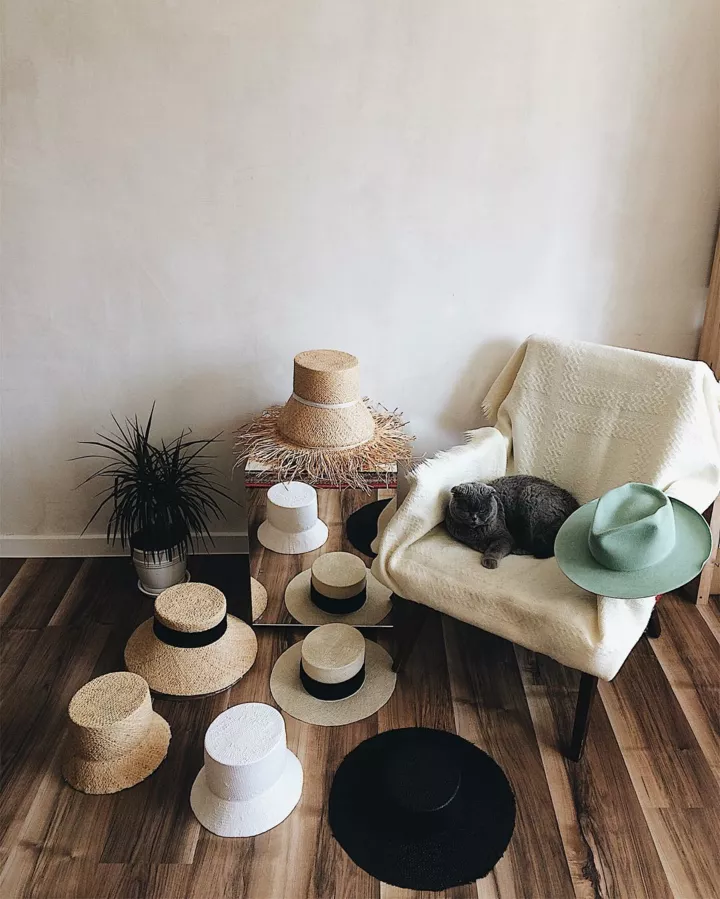 Shmelevsky Hats
Shmelevsky Hats



